Politicians don’t often mention the fast food industry when they debate climate change questions. But they should. This article will tell you why.
But before we go into details:
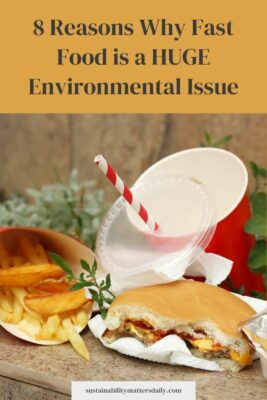
Table of Contents
- 1. Meat Becomes Too Affordable
- 2. Child Education – “Mommy, can we go to McDonald’s tonight?!”
- 3. Animals and Trees in the Amazon Rainforest: WATCH OUT!
- 4. Lazy Lifestyle: More Driving, Less Biking
- 5. Fast Food Chains Decide What “Western Food” is in Asia/South America
- 6. Municipal Waste (Packaging)
- 7. Transportation – “Drive-in” & Meat import
- 8. Factory Farming – “Think about the animals, they got feelings too!!”
- Must-read: “Supersizing Urban America”
- Additional related questions about fast food and climate change
Why is fast food such a huge environmental issue?
Fast food is the concept of serving low-quality meat at an affordable price. These multinational companies buy their beef from companies that are chopping down the rainforest and using an extreme amount of water to produce your hamburger. In addition to that, fast food chains are actively working towards “world domination” by bringing their restaurants to other parts of the world. When you combine all these elements with several marketing campaigns towards children, you start to see a very dangerous pattern.
People eat more and more fast food – and it literally destroys the environment & our health.
Now, let’s dig a bit deeper into the facts…
1. Meat Becomes Too Affordable
Needless to say, most of the products sold in fast food restaurants contain meat. In the USA alone, McDonald’s sells more than 1 billion pounds (!!!!!!!) of beef every year.
If you add all the ham from Subway, chicken from KFC and pork meat from Taco Bell, you will find a number that is quite depressing.
The reason why people buy meat products from fast food restaurants is simply that its cheap. Economies of scale allow these huge corporations to produce an awful lot of meat to a very low cost. Combined with the fact that they fill all kinds of disgusting things in their meat products, they are able to offer fast food at a very affordable price.
A great example of this madness it the burger market in the USA. Did you know that it costs more to buy an “Impossible Burger” (vegan) than a beef burger in the same restaurant?
In other words: you get punished for trying to save the world. Madness.
2. Child Education – “Mommy, can we go to McDonald’s tonight?!”
Ronald McDonald and all of those other marketing efforts aimed towards children should be forbidden. A big part of the infamous documentary “SuperSize Me” was dedicated to showing how fast food chains deliberately try to recruit small kids.
Countless studies have concluded that someone’s eating pattern as an adult is heavily connected to what that person ate as a kid.
Right now we are in the process of creating an army of people that have been used to eating sugar-filled, nasty burgers from the day they turned 3 years old….that doesn’t sound very sustainable, does it?
How can you teach your kids to reduce their carbon footprint? Learn more.
Compilation of Junk Food Adverts Aimed Towards Children [Youtube Video]
3. Animals and Trees in the Amazon Rainforest: WATCH OUT!
The very first time I heard about fast food chains chopping down the Amazon rainforest I got some weird pictures in my head. Being 13 years old at the time, I actually pictured big bulldozers with a McDonald’s logo on them going from tree to tree – and running over tigers on their way.
After reading a book about this specific topic, I found out that it´s not exactly how things work….
However, we do know that local farmers are chopping down the rainforest in poor countries in order to make cattle farms. Once they have produced their meat, they sell that meat to companies like Burger King and McDonald’s.
4. Lazy Lifestyle: More Driving, Less Biking
Ok, I admit that this one might be a bit far out. However, the fatter people get, the less tempted they will be to ride a bike.
Sorry to point out one single country, but just look at the “best country in the world”: United States of America. This is a country where people are fat – and where people drive a lot of cars.
One particular study was conducted to map out the link between obesity and car driving. After looking at obesity rates and willingness to choose a car over any other transportation method, this is their conclusion:
“It stands to reason that the less you bike or walk, the more you drive. And the more you drive, the less exercise you get from the aforementioned activities.”
If you want to read an article about the study (external link, fastcompany.com), feel free to click here.
5. Fast Food Chains Decide What “Western Food” is in Asia/South America
After living in China for five years, I quickly understood that Chinese people divide food into two categories:
1) Chinese food.
2) “Western food”.
When I started to dig a bit deeper and tried to find out what they actually meant by “western food”, I was quite shocked. KFC, McDonald’s, Starbucks, Taco Bell, and the other fast food chains are, unfortunately, the first thing a Chinese person will think of when they describe food from Europe/USA.
How sad is that…!?
So when Chinese people go out to enjoy some delicious food from other parts of the world, they end up at some of these trashy fast food restaurants. Destroying their own health – and destroying the planet.
Fun fact: As of 2019, there are about 2200 McDonald’s restaurants across China. They plan to double that number by the year 2022.
6. Municipal Waste (Packaging)
The day I wrote this article, I actually went down to McDonald’s for lunch. I got some semi-decent food, but I am more interested in telling you about the packaging that I got:
– A huge paper bag
– Five (!!) tissues, which is totally unnecessary.
– Surrounding my chicken legs, another small paper bag.
– My French fries came in some sort of a cardboard box.
– My diet coke was served with a plastic straw.
In other words: everything was wrong.
Not only does fast-food packaging count for about 10 % of all waste being produced, but CNN also recently published an article stating that about one-third of all the packaging contains harmful chemicals. Yuuuuuke!
And just for the record, this is a close-up picture of my Big Mac burger:
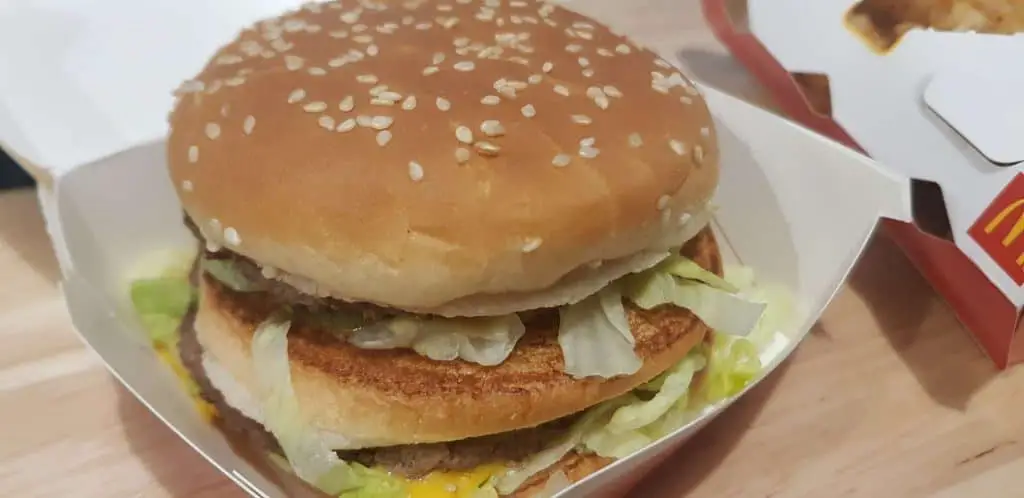
“So you are owning a website called Sustainability Matters AND you are buying McDonalds burgers!? What a hypocrite.”
I know, I know….I did it especially to make a point in this article. I could have lied or chose not to mention it, but I did not. 🙂
7. Transportation – “Drive-in” & Meat import
Several fast food chains offer special deals if people go through their “drive-in” window. In other words: not only do they serve food that destroys the environment, but you are saving some extra money by sitting in your car while you order the food!
Another huge problem is the amount of meat being transported through airplanes, boats, and trucks throughout the world. You might not know, but a lot of the McDonalds meat served in the USA are actually coming from Australia & New Zealand.
Riiight….that sounds environmentally friendly.
8. Factory Farming – “Think about the animals, they got feelings too!!”
This is actually not an element that I usually write an awful lot about. I mean; I hate people that torture animals, but I am not a big animal lover – and I strongly believe that the environmental cause is more important than the animal abuse cause.
Anyway. You don’t have to spend a lot of time on Google before you find out about the huge KFC scandals featuring abuse of chickens. Here’s one of the “harmless“ videos:
And you can imagine how bad the cows in South America are treated – they just haven’t been caught on camera yet.
Must-read: “Supersizing Urban America”
Over the last four-five years, I’ve read quite a lot of books about the fast-food industry.
It disgusts me.
However, I wasn’t aware of the enormous benefits they are given by the American government. You can blame the fast-food chains as much as you want. But as long as you have a government that’s willing to literally make people fatter.
Please, please, please read this book:
- CHICAGO
- Hardcover Book
- Jou, Chin (Author)
- English (Publication Language)
- 248 Pages - 03/15/2017 (Publication Date) - University of Chicago Press (Publisher)
Believe me – you will not see government messages about obesity and healthy food in the same way again. This is an amazing book that everyone should read. It doesn’t go too much into details in regards to the environmental impact of fast-food. But it does reveal how the American government literally sponsor the growth of these harmful companies.
Also read the article about me testing a veggie burger.
Additional related questions about fast food and climate change
Q: What are the biggest fast-food chains in the world?
A: This table will give you an idea:
| Restaurant name | Number of restaurants worldwide | Serves mainly |
|---|---|---|
| McDonald’s | 35,000 | Hamburgers (beef) |
| KFC [Kentucky Fried Chicken] | 18,875 | Chicken |
| Subway | 42,174 | Sandwiches, with both vegan and meat options |
| Pizza Hut | 6000 | Pizzas...? |
| Starbucks | 23,187 | Coffee, sandwiches and other hot beverages |
| Burger King | 13,000 | Hamburgers (beef) |
| Domino’s Pizza | 10,000 | Pizzas...? |
Please note that these fast-food chains are ranked by revenue.
Q: Follow-up question: as McDonalds is the biggest one, does it automatically contribute with the largest carbon footprint?
A: Not necessarily. But in this case; yes. McDonalds do almost only offer beef/kattle products, which is extremely harmful for the environment. If you want to read more about why the beef industry kills our planet, feel free to read this article.
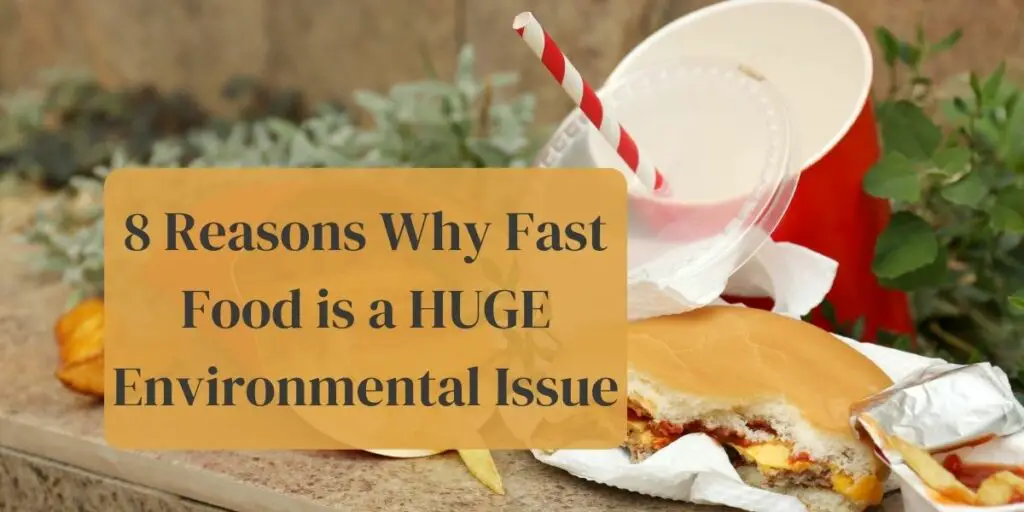

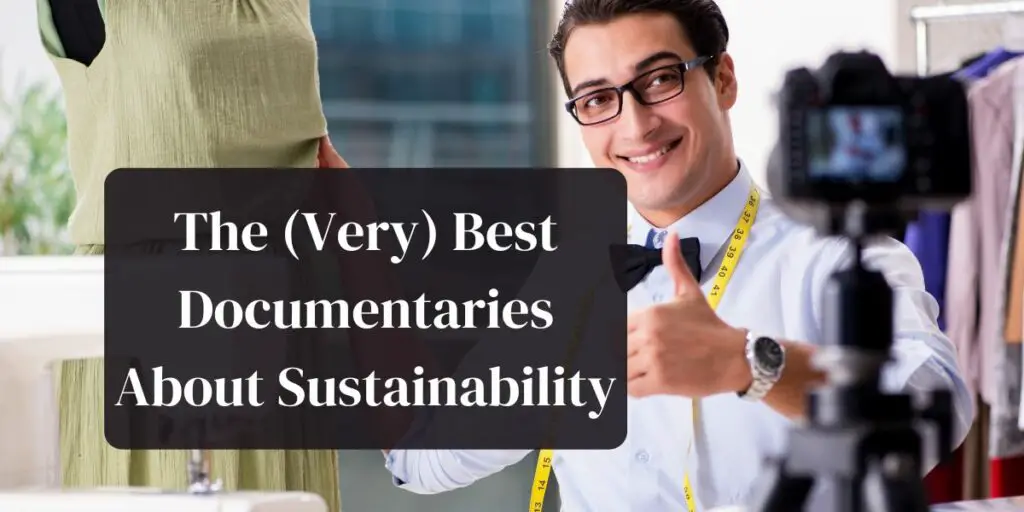
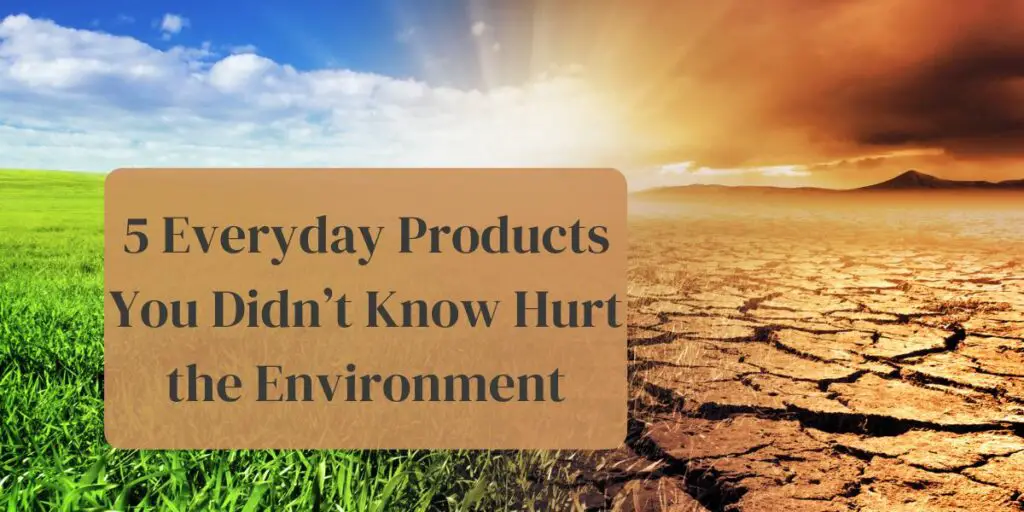
Beef demand destroys the rainforest. Not only that, they also destroy peoples’ health.
If the world was in balance, it wouldn’t be allowed to make any fast food at all. Look at a picture from people in the 1960s and compare them to people today. We have grown 100 % fatter because of the fast food industry.
The increased demand for meat requires ever-increasing land area for pasture for cattle, which literally eats into the rainforest because large forest areas are razed each year to be converted to pasture. According to the World Health Organization (WHO), global meat production will increase by more than 70 per cent from the turn of the millennium until 2030.
This is reflected in the Brazilian cattle industry. In 2018, the country was home to 232 million cows, an increase of 13 million cows in 2016 alone.
“Cattle agreement” has reduced deforestation
Some measures have been taken to limit this bleak development. In 2009, Brazil’s largest meat producers signed an agreement known as the “cattle agreement”. This happened after strong national and international pressure, including from Greenpeace. The agreement obliges meat producers to ensure that their suppliers do not destroy rainforest in their operations.
Thank you for helping me out with my research paper. In fact, I am writing about how the fast food industry destroys the planet – and you are JUST right with all these points. I am from Slovakia, but I know that things are much worse in the fast food industry in the US. But that might also be why Americans have such a big problem with overweight…they do not only destroy the Amazon rainforest and increase CO2 pollution levels, but they also destroy their own bodies
Hello Pawel, you have to excuse my late reply. For some reason it went over my head, but I saw it now that I updated the article.
Hope you did well on your thesis. I can’t really say whether or not the American fast food industry is better or worse than other countries. What I do know is that the CO2 emissions per capita in the US is significantly higher compared to other countries. And yes – their (fast food) diet have a quite significant share of that. 🙂